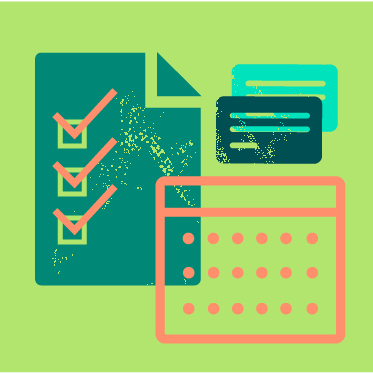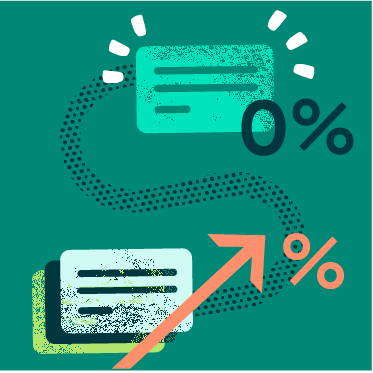Paying Off Credit Card Debt With a Balance Transfer
January 15, 2020 • 4 minute read
How to Pay Off Credit Card Debt With a Balance Transfer
When you’re struggling with credit card debt, it can seem like every month the financial hole just gets deeper and deeper. Making the minimum payment on a large credit card balance could mean decades of payments and ever-increasing interest charges.
If you want to pay off your credit cards and reclaim your financial future, you need a plan of attack. Taking advantage of a balance transfer that offers zero or low interest is a great way to pay down your debt and finally pay off what you owe. But before you jump in, there are things you need to know.

Here are some smart balance transfer strategies to help you succeed at your debt repayment plans.
Plan it all out.
If you’re going to use balance transfer offers effectively, you need a well thought out plan — one you can return to again and again. Before you sign up for the card and transfer your balances, lay it all out.
Make a list of what you owe, including the balance on each credit card. Once you know how much you’ll be transferring, you can develop a repayment schedule that makes sense given your income and financial constraints. You want your plan to be ambitious but not unrealistic, so take a close look at your household budget and act accordingly.

Find a card with a generous term.
Not all balance transfer options are created equal. Some have far better terms than others, and it’s important to choose the right option. Some balance transfer cards offer zero interest for six months or more, while others provide a teaser rate for just a month or two.
Before you sign up for any balance transfer offer, make sure you understand all the terms and conditions — from balance transfer fees or annual fees you’ll have to pay to the new interest rate the card will reset to once the initial promotion has expired. If you’re choosing from multiple balance transfer options, calculate your potential savings and determine whether you can pay off your debt before the special rate period ends.
Once you’ve chosen the right balance transfer option and been approved, it’s time to put your plan into action. Start by setting a reminder for yourself a month or two before the teaser rate ends. That will give you time to find another balance transfer option if necessary. Once that’s done, you can work on your repayment schedule. Aim for one that will let you retire your debt before the zero- or low-interest rate offer expires.
Double down on your efforts.

It’s easy to coast when your high-interest balance has been transferred to a zero-interest or low-interest alternative, but now isn’t the time to rest easy. This is the time to double down and work as hard as you can to manage your debt and pay off that balance once and for all.
It may seem far off now, but the end of that zero- or low-interest grace period will arrive before you know it. If your balance isn’t paid off by then, you could be facing much higher interest rates — making it that much harder to pay down your debt.
Be ready to make your move.
Hopefully, your balance transfer will go smoothly, and your debt will be gone before the initial grace period expires. Even so, it’s important to have a plan B so you can escape high interest and keep working to pay off your debt.
If you mark the end of the grace period on your calendar and set a reminder, you’ll have plenty of warning. When the grace period is a month or two away from its end date, see where you stand and determine whether you’re on track to pay off your credit card debt.
If you’re on schedule, just keep doing what you’ve been doing — putting every spare dollar toward your debt repayment so you can stay on track. If your plans have slipped, it may be time to look for another balance transfer promotion so you can continue your debt repayment strategy.
When it comes to credit card debt, prevention is always the best course of action to ensure good financial health. But if you already have credit card debt, using balance transfer offers to pay it off is a solid second choice. And by following these strategies, you can pay down that debt more quickly so you can reclaim your financial life and take charge of your money.
Save on interest
Pay off credit card debt and save on interest.
Enjoy a 0% introductory rate on balance transfers for six months and no annual fee with the WSECU Low Rate Visa® card.*
After six months, the standard 12.50% - 21.50% APR will apply.
